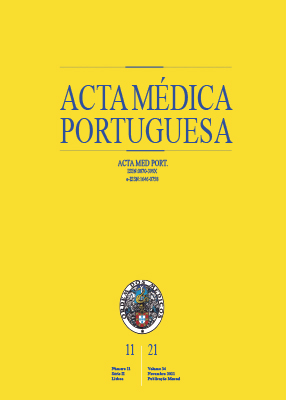Human Rabies: Optimization of Prevention and Paths Towards the Cure
DOI:
https://doi.org/10.20344/amp.10657Keywords:
Immunoglobulins, Rabies/immunology, Rabies/prevention & control, Rabies/therapy, Rabies VaccinesAbstract
Introduction: Rabies is one of the oldest and deadliest infectious diseases known by human beings and is commonly transmitted by animal bites. Dogs have a major role in the transmission of the virus. Rabies has no approved curative therapy, and its prevention, even though it is highly effective, it is complex, expensive and challenging in terms of accessibility, particularly regarding immunoglobulin. This review aims to provide a practical approach to cost-effective prevention as well as the future perspectives regarding the development of an effective and secure cure.
Material and Methods: This review article was based on a search in PubMed using the following MeSH terms: rabies, preexposure and postexposure prophylaxis, rabies immune globulin, treatment, Milwaukee Protocol.
Results: Concerning rabies infection, it’s important to apply the prevention protocols effectively as early as possible due the unpredictable time window between infection and the appearance of symptoms. The literature shows that is possible to reduce the vaccination dosage and maintain the efficiency of the immunization, and booster vaccination is only required in specific risk groups/populations.
Discussion: The current philosophy of cost-effective prevention which consists of canine vaccination, restriction of vaccine overdosage used in humans and the appropriate use of rabies immunoglobulin – could make the prevention of the disease accessible for those countries that need it the most. There are several therapies in development but they’re all in early stages of development.
Conclusion: The development of new and more effective therapeutic and prophylactic approaches is a goal not yet achieved and relies on a better understanding of the disease pathophysiology.
Downloads
Downloads
Published
How to Cite
Issue
Section
License
Copyright (c) 2020 Acta Médica Portuguesa

This work is licensed under a Creative Commons Attribution-NonCommercial 4.0 International License.
All the articles published in the AMP are open access and comply with the requirements of funding agencies or academic institutions. The AMP is governed by the terms of the Creative Commons ‘Attribution – Non-Commercial Use - (CC-BY-NC)’ license, regarding the use by third parties.
It is the author’s responsibility to obtain approval for the reproduction of figures, tables, etc. from other publications.
Upon acceptance of an article for publication, the authors will be asked to complete the ICMJE “Copyright Liability and Copyright Sharing Statement “(http://www.actamedicaportuguesa.com/info/AMP-NormasPublicacao.pdf) and the “Declaration of Potential Conflicts of Interest” (http:// www.icmje.org/conflicts-of-interest). An e-mail will be sent to the corresponding author to acknowledge receipt of the manuscript.
After publication, the authors are authorised to make their articles available in repositories of their institutions of origin, as long as they always mention where they were published and according to the Creative Commons license.









